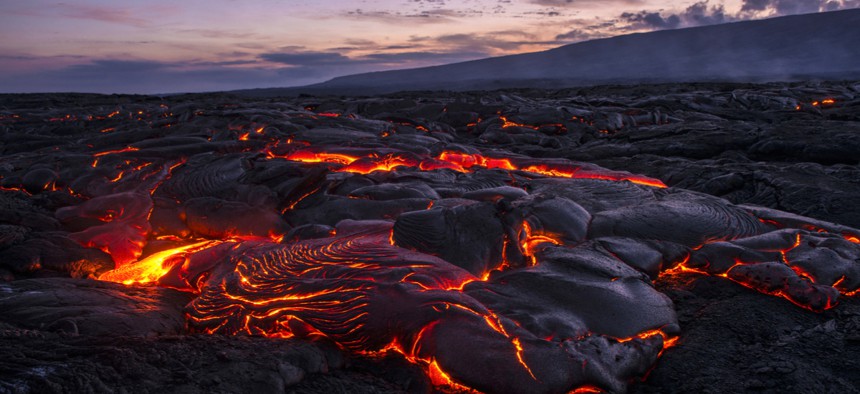Interior is Using Drones to Save People Trapped by Hot Lava

Yvonne Baur/Shutterstock.com
They’ve also been faster and safer than putting boots on the ground, a department official said.
Navigating a field of hot lava makes for a fun kids game, but it’s far more terrifying in real life.
On May 27, one unfortunate individual was in that exact situation, surrounded by molten rock flowing from the Mount Kilauea volcano in Hawaii. But the Interior Department and its fleet of drones swooped in.
One drone, which the agency was using to monitor volcanic activity and assist its response to the eruption, spotted someone cornered as lava flowed toward their house. Ordered via radio to “follow the drone,” the person made their way through the jungle and ultimately connected with a search crew that took them to safety.
While the astonishing rescue shows the value of more eyes in the sky when disaster strikes, it only scrapes the surface of the massive benefits unmanned aircraft can have on the way the government answers emergencies and manages natural resources, according to Mark Bathrick, director of Interior’s Office of Aviation Services.
Drones have become a critical part of the agency’s response to volcanic eruptions, as well as hurricanes, wildfires and other natural disasters, especially in situations where high winds and heavy ash could place human pilots in harm’s way, Bathrick told Nextgov. Through video streams, infrared cameras, heat sensors and other equipment, drones can also provide extra information to make manned operations more effective.
“We’re able to do our mission, which is often running towards those natural disasters, in a much safer fashion through the use of unmanned aircraft,” he said.
Drones are also taking over in risky day-to-day operations—like rescuing fallen hikers or surveying rugged terrain—where Interior employees would otherwise put themselves in danger, he said.
And they save not only lives but money as well.
Bathrick said drones usually complete missions in about one-seventh of the time and at one-tenth of the cost of “the traditional means of doing business.” A chunk of those savings come from leaving more expensive aircraft on the ground, but a significant portion comes from drones taking over responsibilities employees would otherwise perform on foot, like surveying land and monitoring wildlife, he said.
The agency relied on drones to fly nearly 5,000 missions last year in the agency’s efforts to track wildlife, inspect infrastructure, survey federal lands and respond to natural disasters, according to its annual UAS report. Bathrick expects that number to increase 50 percent in 2018.






